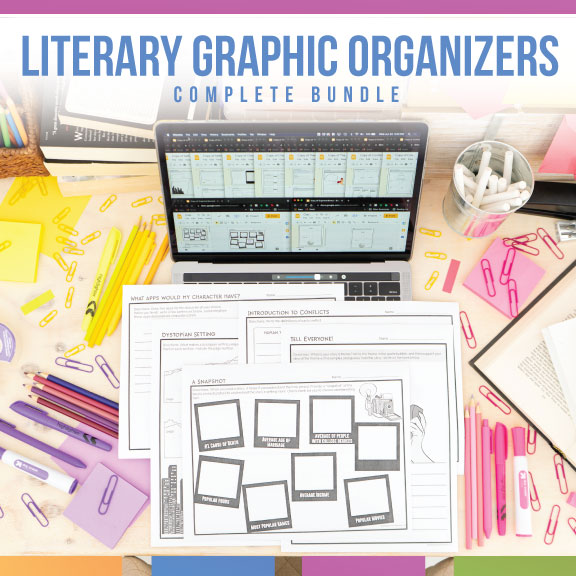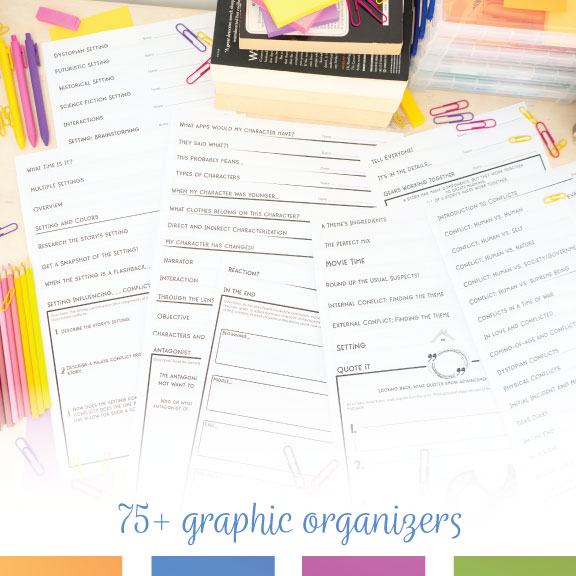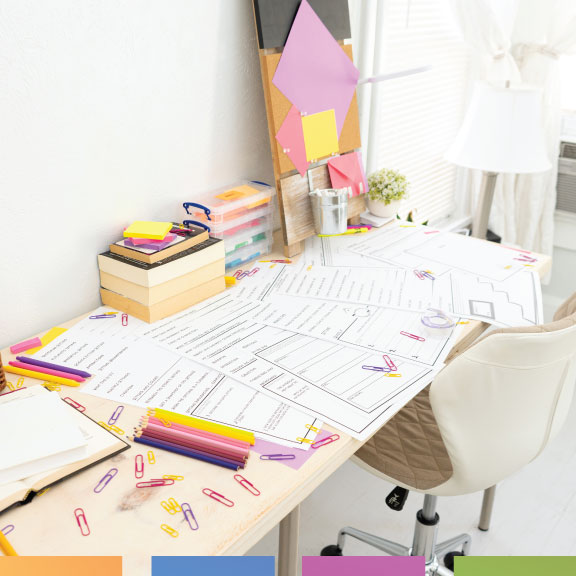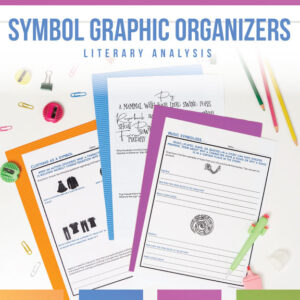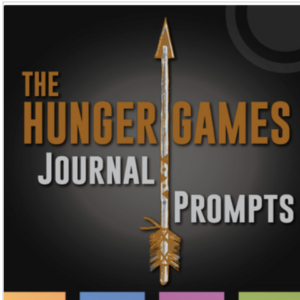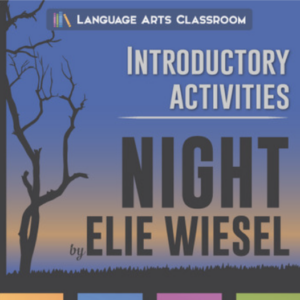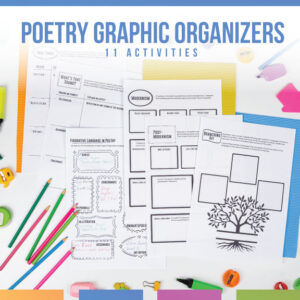Description
These literature graphic organizers for studying literary devices and literary analysis will work with any novel or short story. These literary graphic organizers also work for lit circles. Over 85 graphic organizers to inspire students during and after reading literature are included.
Overview of these story elements graphic organizer:
• These graphic organizers will get students writing and thinking about the literature they read. Because there are numerous graphic organizers, you should find it easy to differentiate or to allow for student choice.
• You will receive all graphic organizers in a PDF version as well as links to Google Drive versions.
• These graphic organizers and activities will engage students and provide ample opportunities for understanding the deeper parts of literature. Throughout, I have provided a graphic organizer example where necessary.
• Use these literary elements graphic organizers as assignments, review, or conversation starters.
• The layout is not “babyish,” and the images will inspire students to think thoroughly; please see the preview for samples.
• You can see the individual products in this bundle (listed below) and their feedback.
This is a comprehensive list of the literature graphic organizers you will receive:
Conflict graphic organizers
1. Introduction to Conflicts: illustrated with definitions.
2. Introduction to Conflicts: blank for students to take notes. Use these for differentiation. I use these as reference sheets throughout the school year.
3. Human vs. Human
4. Human vs. Self
5. Human vs. Nature
6. Human vs. Society/ Government
7. Human vs. Supreme Being
8. Conflicts in a Time of War
9. In Love and Conflicted
10. Coming of Age and Conflicted
11. Dystopian Conflicts
12. Physical Conflicts
13. Initial Incident: study the specifics of the story’s initial incident when the main conflict is introduced.
14. Dear Diary: students will write from the point of view of a conflicted character.
15. In the End: resolution of the conflict.
16. Evaluate the Story’s Conflicts: students choose the story’s biggest conflicts and defend their choices.
17. In Review: overall review of conflicts from the story.
18. What if this Conflict…: students will imagine what happens if a specific conflict was not in the story.
19. Resolve the Conflict: if the writer does not completely solve the conflict, students may finish the story’s conflict.
20. Step by Step: students will find the specific steps that led to the story’s main conflict
(objective summary).
Characterization graphic organizers
1. What apps would my character have?
2. They said what?! – direct characterization
3. This probably means… – indirect characterization
4. Types of characters – stock, static, dynamic, flat, round – blank
5. Types of characters – stock, static, dynamic, flat, round – with definitions
6. Types of characters: flat vs. round
7. Types of characters: static vs. dynamic
8. When my character was younger…
9. What clothes belong on my character? – indirect characterization
10. Drawing conclusions from direct and indirect characterization
11. My character has changed!
12. Narrating – what the narrator says
13. Interaction – breaking down how two characters interact
14. Reaction – how characters react to events
15. In the end… – how a character changed throughout the story
16. Using binoculars – narrator’s point of view
17. Objectively – writing an objective summary of a character’s actions
18. How does the story’s setting affect the character?
19. What is a protagonist?
20. What is an antagonist?
Theme graphic organizers
1. Tell Everyone! old-fashioned phone
2. Tell Everyone! text message with a smart phone
Note: these options allow for student choice, or the phone image that best
fits with the story’s time period.
3. It’s in the details… providing details to support the theme.
4. It’s in the details… providing a quote and a conflict to support the theme
Note: these two graphic organizers allow for differentiation. Choose the “details” organizer if
students need more options.
5. What is the story’s ‘recipe’ for that perfect theme?
6. Ingredients- adding pieces that create the theme.
7. Movie Time! summarizing the theme throughout the story.
8. Movie Time! drawing scenes that explain the theme.
9. Conflicting Gears – finding the theme through the conflicts
10. Round Up the Usual Suspects – possible themes from all stories
11. Megaphone: Inferring the theme
12. Internal Conflict and Theme: breaking down one internal conflict for analysis into the theme.
13. External Conflict and Theme: breaking down one external conflict for analysis into the theme.
14. Setting and Theme: locating if certain settings added specific elements to the theme.
15. Quotes and Theme: looking at revealing quotes that add to the theme.
Setting graphic organizers
1. Dystopian
2. Futuristic
3. Historical
4. Science Fiction
5. Interactions (setting and symbol, setting and character)
6. What time is it? (studying aspects of a time period)
7. Multiple settings
8. Overview: location and time
9. Setting and colors
10. Research the story’s setting
11. Setting: brainstorming
12. Get a snapshot of the setting!
13. When the setting is a flashback
14. Setting: first person point of view
15. Setting: third person point of view
16. Setting and symbols
17. Setting and characters
18. Setting and theme
19. Setting and plot
20. Setting and conflicts
Symbolization graphic organizers
1. Clothing—connect to characterization
2. Music—expounding upon setting and character
3. Colors
4. Weather
5. Food
6. Nature
7. Possessions
8. Blooming symbol—use with any symbol
9. Animals
10. Unpack the symbol—dig deeper with any symbol
BONUS graphic organizers
1. Author background
2. Motif
3. Plot structure
4. Time Period
5. “Snapshot” a moment in time
I have included dozens of literature graphic organizers for you to decide how and when you use them with your literature lessons. Students will be able to show their understanding using these tools!

